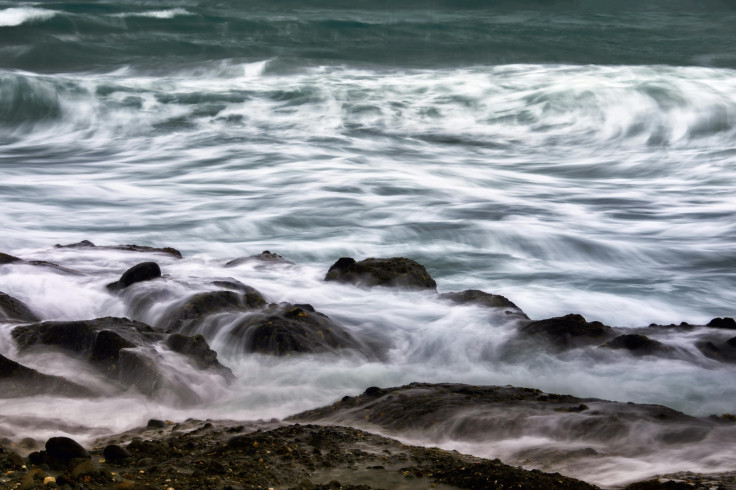Alaska Typhoon Updates: Which Cities Were Flooded and Where the Storm Is Headed Next
Authorities warn of continued flooding as storm moves northward

The remnants of Typhoon Halong have unleashed catastrophic flooding and wind damage across western Alaska, leaving one person dead, at least two missing, and dozens rescued from submerged homes.
The storm, now classified as an extratropical cyclone, battered the Yukon-Kuskokwim Delta region over the weekend, producing hurricane-force gusts and storm surges that swept away houses and destroyed infrastructure.
Emergency officials have described several coastal communities as 'completely devastated' as the system continues moving northward through the Bering Sea.
Authorities have confirmed that at least 51 people have been rescued so far, while more than 1,000 residents have been displaced by floodwaters. Alaska's Department of Public Safety warned that conditions remain dangerous as the storm's remnants track towards the Chukchi Sea, bringing heavy winds, high surf, and further flooding risks.
Communities Worst Affected by Flooding
The small coastal villages of Kipnuk, Kwigillingok, Napakiak, and Kotlik have reported some of the most severe damage. In Kipnuk, floodwaters reached record levels, reportedly rising over 6.6 feet above normal high tide.
Dozens of homes were swept from their foundations, forcing residents to seek refuge in elevated areas. Emergency teams rescued around 16 people from flooded houses, while others remain unaccounted for.
In nearby Kwigillingok, water levels rose rapidly overnight, inundating entire streets and carrying debris across the village. Alaska Public Media reported multiple homes destroyed and several residents missing.
Napakiak and Kotlik also suffered significant destruction, with widespread damage to power lines, communication towers, and transport facilities.
In Bethel, waves from the Kuskokwim River inundated riverfront areas, damaging boats and infrastructure. Local officials said a barge broke free from its moorings, colliding with a bridge and further complicating rescue operations.
Dozens of smaller settlements across the Yukon-Kuskokwim Delta have reported partial evacuations as emergency shelters fill with displaced families.
Emergency Response and Rescue Efforts Underway
Rescue operations have been underway since the weekend, coordinated between local authorities, the Alaska State Troopers, and the U.S. Coast Guard. Teams using helicopters and boats have been evacuating residents from low-lying areas and delivering emergency supplies to cut-off villages.
Officials said one fatality was confirmed on Monday, with two others still missing. More than 50 rescues have been completed so far, while others await evacuation as floodwaters persist. Communication remains limited in several communities due to damaged power lines and disrupted satellite systems.
State emergency officials have said that response teams are doing everything possible to reach affected areas. However, some villages remain inaccessible due to storm surge and washed-out roads.
Despite these challenges, rescue and relief teams are working around the clock to assist those impacted by the storm and deliver emergency supplies.
The Federal Emergency Management Agency (FEMA) has also been monitoring the situation, ready to provide assistance as conditions allow.
Infrastructure Damage and Ongoing Challenges
The storm has left behind widespread destruction, with homes, schools, and power systems severely damaged. Several airstrips remain flooded, hampering the delivery of aid and medical support.
Many affected communities are remote and accessible only by boat or aircraft, posing serious challenges for emergency response teams.
Officials said restoring electricity and communication lines is now a top priority, along with providing food, clean water, and temporary housing. Environmental experts have noted that the scale of the flooding underscores the growing vulnerability of Alaska's coastal communities to severe weather events, as storm surges and erosion intensify along the state's western coast.
Rescue efforts and damage assessments continue as authorities monitor the storm's movement into northern Alaska.
Where the Storm Is Headed Next
Meteorologists said the storm's remnants are moving north-east across the Bering Sea and are forecast to reach the Chukchi Sea and Arctic coastal regions by midweek. While weakening, the system is expected to bring strong winds, high waves, and secondary flooding to coastal areas from Nome to Utqiagvik.
The National Weather Service has issued coastal flood warnings for several northern communities, advising residents to remain alert for storm surges, river backflow, and continued power disruptions. Light snow and rain are also forecast as the storm interacts with colder Arctic air, potentially creating hazardous travel conditions.
Experts warn that while the storm is losing strength, after-effects such as erosion, infrastructure damage, and prolonged flooding may continue for several days. Monitoring continues as Alaska braces for more extreme weather in the coming weeks.
© Copyright IBTimes 2025. All rights reserved.





















